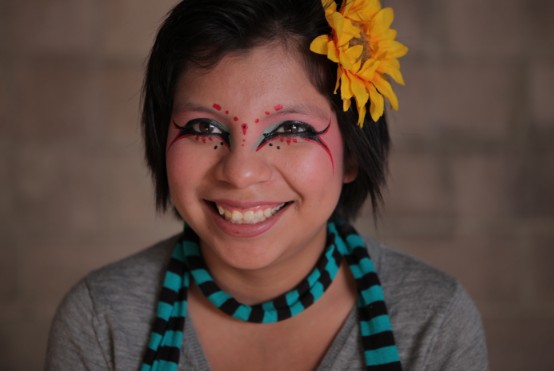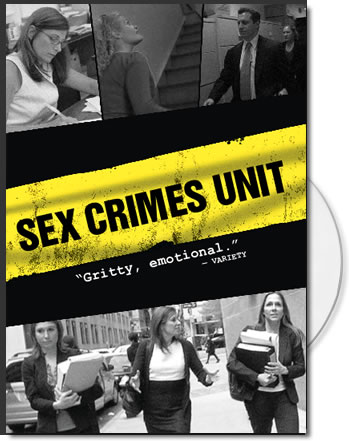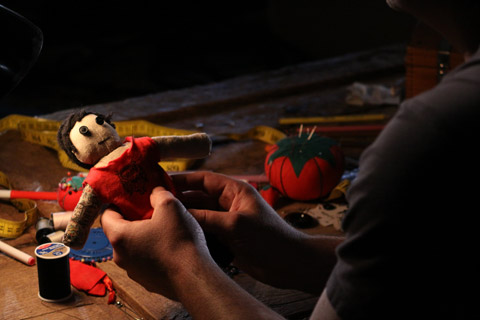Q: How did you learn about Inocente’s story? What inspired you to make this film? How did the concept for the film come about?
A: Inocente as a film idea really started with a stat. 1 in 45. We simply couldn’t believe that in this country 1 in 45 children were homeless. In fact when we started first researching, it was even higher – 1 in 50. Our filmmaking style is very personal, so we put an enormous amount of effort in finding the right voice for this story. Our research team spent months making hundreds of calls to shelters, social workers, school principals, and reporters to find the right character. Ultimately, it was a call to the founder of an incredible arts program that led us to Inocente. Matt D’Arrigo, the founder of ARTS: A Reason to Survive, in San Diego, sent us photos of a teenage girl whose wildly painted face and fantastical swirls of color on her canvas gave no indication of a childhood spent homeless, amongst fear of domestic abuse and deportation. We briefly talked to her and felt that her courage and talent would convey her complex story in an honest way. We flew across the country and started filming her the next week.
Inocente is very strong, but also fragile. We were lucky enough to meet Inocente at a pivotal moment when she was taking control of her life for the first time. Because she was willing to show herself in a vulnerable way, the film concept became clear: this was not simply an issue film, this was a story about one person coming into her own, determined to forge her own path and defy expectations. Another important expectation we wanted to redefine is what the common perception is about the life of homeless children. For so many homeless kids, being homeless is not about sleeping under a bridge. It’s an endless shuffle between friends’ couches and shelters that usually ends in the family falling apart under the stress. A true home is as much about family as it is the roof over your head.
Our hope is that viewers can relate to her and love her as a person, and in turn learn a bit about homelessness and the factors that fuel the problem from a very personal perspective.
Q: How long did it take to film the documentary?
A: We started filming Inocente in 2008, and we wrapped production in 2011. The protracted schedule and multiple visits really enabled us to get to know her on a personal level, to watch her grow and mature and to genuinely immerse ourselves in the ongoing, chronic nature of her search for a place to call home. Over the course of three years, we watched her move and change schools multiple times, repeatedly move in and out of her mother’s house, crash on various friends couches, and in and out of a teenage shelter -‐ -‐ the moves were endless. The longer filming schedule really allowed us time for the film to take a back seat when necessary and to spend time with her without the cameras. Her trust was paramount to us, and we had to be patient.
Q: What camera did you use and did you use any unusual equipment?
A: Our primary camera was the Panasonic Varicam 2700 – an updated tapeless version of the camera we used to shoot War/Dance. We felt like the Varicam gave us the closest feeling to film of any camera available at that time.
We started shooting right as the Canon 5D Mark II was released, so we also used that to film lots of her artwork and the interview. The 5D MarkII allowed us to interview Inocente in a more intimate style that we felt was less intimidating than with a larger camera. Sean used many vintage still camera lenses, shooting with a shallow depth of field to achieve a sense of intimacy and have the film feel very tactile. That camera is so small and lightweight that we were able to mount it to paintbrushes to capture the messy, beautiful way that she paints. There is something visceral about the way she uses her hands to paint and immerses herself into her work that was crucial for us to capture.
Q: Did you encounter any challenges in getting the story? What production techniques did you use to help capture Inocente’s story?
A: There were all sorts of challenges telling this story.
From the outset, trust is paramount. And building trust with someone who has been let down by many adults in her life is not easy. During interviews, if at any time Inocente wanted to stop, we would stop. We also needed to build trust with her mother, who was bravely open about her role in her and her daughter’s troubled relationship. We are hugely thankful to her mother, and most importantly Inocente, for sharing their true feelings about their situation and relationship with incredible honesty.
We also had to deal with simple practicalities of keeping up with Inocente’s life from another coast, which was hard since neither her mother nor Inocente had any kind of phone until the end of our third year of shooting. So sometimes we would hear that they had moved again, weeks later. Thankfully her connection to ARTS would allow us to reconnect with her via her mentors there.
We also faced the creative challenge of how we would best bring to life the landscape of her paintings and their connection to her past history. The structure of the film follows her progress towards making the art for her first art show, yet as we move forward to that deadline, we are actually moving back in time with the creation of each painting. Thus Inocente’s creative moments carry more weight. We decided to film her painting moments as fluidly as possible to give a sense of internal thought and recollection -‐ -‐ rigging time lapse setups with the 5D, dolly shots, and recording whatever thoughts she had on what the painting was about.
Another challenge was how to deliver the impact of the guilt she felt about causing the fight between her parents that ultimately deported her father and put her family on the street. From filming in War/Dance, we had found a connection between the actual locations as backdrop and asked if it was possible to film in her father’s sister’s house, the house where the fight took place. Inocente filmed outside the house and her expression and brave recollection of that night’s events combine to deliver a powerful chain of events. The editor of this film, Jeff Consiglio, was the same editor we worked with on War/Dance and his sensibility and understanding of ours, allowed us to bring the right emotion of these scenes and the film as a whole.
Q: How familiar were you with the kind of struggles that Inocente faces? Were you surprised with your discoveries through the process of filming?
A: While we had never focused on the issue of homelessness before, we had told very emotional, first person stories about children overcoming hardship. In this aspect, it’s familiar in that you are relating to what this individual has that enables them to be resilient. This is timeless, and something we find ourselves returning to time and time again in our stories. But in the process of making this film, what was a shock to us what just the extent that children and families are America’s new face of homelessness. In the process of finding Inocente, we met with many children whose stories were devastating and often painted a picture of families struggling in cities all over the country.
Q: The film focuses on Inocente’s particular story. Did you meet any other children with similar stories and if so, how do their stories compare? Why did you decide to focus the film on only one character?
A: We talked to children in DC, NY, Las Vegas, Ohio, Balitmore…many of the stories were incredibly familiar. Issues of illegal status, foreclosed houses, financial stability that fell apart and had families living in cars in a matter of weeks. It was startling how quickly some of these situations went from family vacations and music lessons to homeless shelters. But in the case of Inocente, we felt that her strength of personality and openness, and inspirational drive to not define herself by her surrounding circumstance but by her individual talent, combined with a back-‐story that touched on issues that are often ensnarled with homelessness -‐ -‐ illegal status, domestic abuse, parental substance abuse -‐ -‐ that she was the right person to take this journey with.
When you make a film that touches on an issue, there is always the question that if by choosing one personal story, that you exclude the experience of what others have endured. But this is a risk we usually choose to take in our films, since ultimately this is about a person. Who has dreams, who shares her own viewpoint, and it’s following a story arc that you connect to. We will always choose whatever creates the strongest emotional connection and in this case, following a young girl in a coming of age journey is what you connect to as an audience. That you become informed about the plight of homelessness, and the transformative power of art is of course a critical part of what we want people to walk away with, but it’s always the personal story that is the most important focus for us
Q: What additional challenges does Inocente face by being not only homeless but also undocumented? What resources are available to undocumented, homeless immigrants?
A: The great news is that Inocente and her family are no longer undocumented. As filmmakers, we were very careful with this issue because we did not want to jeopardize their immigration status through the airing of the film.
Before that paperwork was finalized, Inocente was plagued by daily fears about being deported – and had to watch some of her friends be sent back to Mexico. I think the thing that scared her most was the prospect of being sent to a place she didn’t even remember – which seemed even more alienating than any experience of homelessness she could imagine here in the US. While she dreaded the shelters here in the US, they were at least familiar; the fear of deportation represented something totally unknown.
Being undocumented seemed to make it all the more difficult for Inocente’s mother to ever create stability for her family, to ever find any forward momentum or financial security, since it was challenging to find work at all or even sign a lease.
ARTS is the extraordinary program in San Diego that cultivated Inocente’s talent and provided a safe and supportive space for her to express herself. Inocente passed her GED just last month, so she is poised for her next chapter as an artist and a young adult. Matt D’Arrigo and the ARTS staff are in the process of helping her get her first studio apartment, and will stay involved in her life to help offer the support and guidance she needs as she takes her next steps in life.
Q: What were your goals in making the film?
A: We first and foremost wanted to make a great film. Something that is emotional, cinematic, and immerses you into the full feel of someone’s life at a pivotal moment that defines them. We wanted the audience to be moved by her story, to connect with Inocente, and the complexity of the situation that drags her down into one definition or another, and her stubbornness to keep on a path that truly identifies her. Her life is very much a work in progress, as is everyone’s. And we want the audience to root for her as we do, and feel that they have been introduced to common problems the 1.6 million homeless children have to deal with. At the same time, it is incredibly important to us to highlight the incredible impact that art has made in her life. I would not like to imagine where she might be if she had not been embraced by the amazing support and guidance that the ARTS staff and program offered to her. It is programs like these that continue to need everyone’s support and funding at a time when government/educational support can no longer be counted upon.
Lastly, it is worth mentioning what Inocente’s answer was when we asked her why she wanted to participate in this film, since our answer carries the baton she passed to us. She said she wanted to let other kids in her situation know that they matter, that their stories and their dreams matter. We have never met anyone who talks about their dreams as much as Inocente does. On every canvas she paints, she returns to the world she creates in her mind, and what she quietly hopes to be in her future. It was one of the main reasons we felt it was perfect to end the film on a dream she had one night, that touched on all the ideas that seem virtually impossible for most kids like her. We are excited to think about how this film might connect some individuals who would benefit greatly from finding one another.




